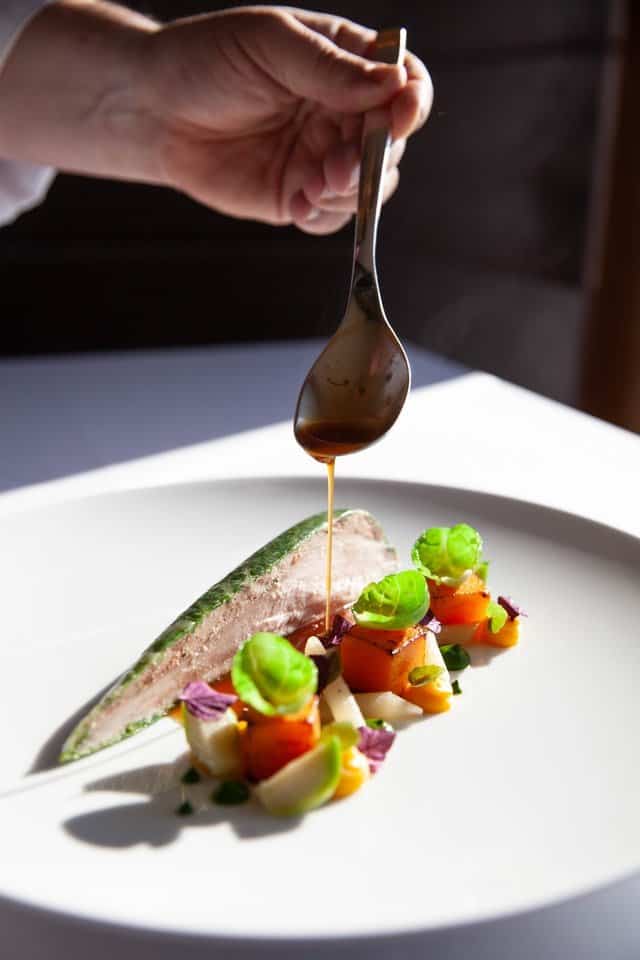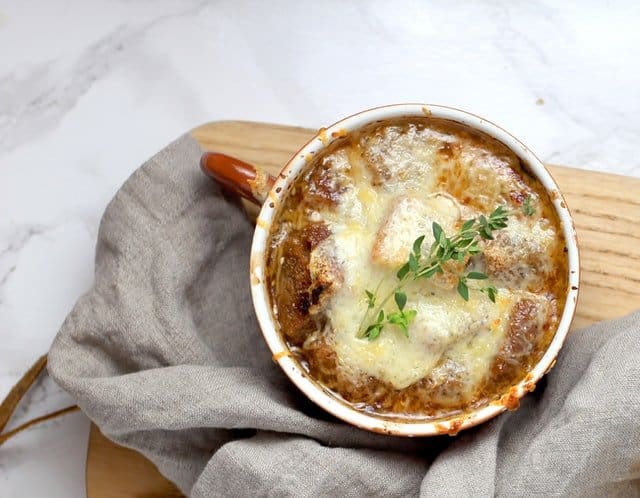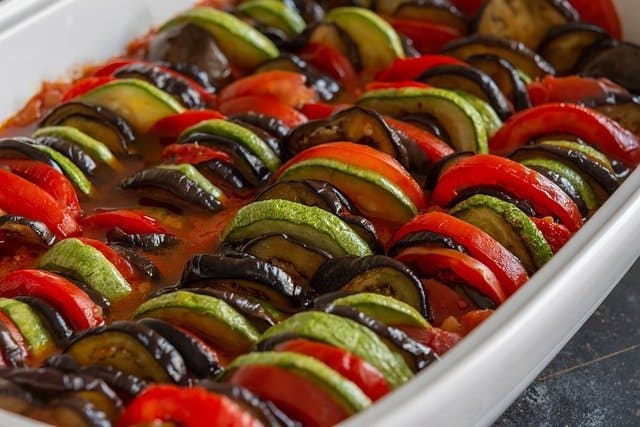Do you know that UNESCO placed the ‘gastronomic meal of the French’ in its list of intangible human culture? Do you know that it happened in 2010? I guess you may not know, and if you know then I bow down in respect for the knowledge you possess. UNESCO tags are by no means any occasional wonders. This is why French Cuisine garners respect from all over the world. The masters in the culinary world swear by the quality of French Cuisine and this is why even I always had a profound respect for this cuisine.
I have read debates on French cuisine being overrated and they all are making sense in just one common point that no matter what, but French cuisine can never be underrated. The sole reason behind it is the fact that French cuisine in itself oozes class and elegance that it can never be underrated. Even a culinary novice will also not dare to speak against French cuisine. In many global culinary institutes, the French cooking and French cuisine is viewed as a final frontier that needs to be conquered to enter this prestigious world of cooking.
Today in this blog let me take you along to explore this beautiful cuisine which inspires many cooking enthusiasts. It has set standards around the world especially in the hospitality industry. When we start slicing the dimensions of this, you will find out that French cuisine is not only about food, but so much more. So are you excited?
French Cuisine’s brief history
It all started in the medieval ages with ‘service en confusion’ which meant to serve everything on the table at once and then the whole eating party would eat it with wines flowing the scene and the music upping the ante. Yes the same as you visualized from your memories of Hollywood flicks based on medieval ages. It is said that mustard levels were high in the food, and they all ate with hands. So now this makes me wonder how this journey of transformation have been. It is definitely worth reading about. Don’t you think so?
Moving a little forward on the timeline will take you the period post 15th century which saw the introduction of the guilds which was restrictive in a sense that it asked people to stick with one guild. It meant a butcher was not allowed to cook and a chef was not allowed to sell and so on. The only bright spot in this guild system was that it introduced ranks in the commercial kitchens like cooks, sous chef, chef and master chef. These ranks still live on in the commercial set ups.
During these centuries ranging from 15th to 17th the finesse started to show up. Earliest written works on food that later on were labelled as cook books were written by famous chefs of that era. The exchange of plants, herbs, and other indigenous supplies with the New World (The world outside Europe, especially western) happened in this period. Haute Cuisine had its foundation laid in this period. The Haute cuisine was perhaps the thing where the fine tuning of the meals started.
Then came the period post 17th Century which saw the French Revolution. This is a liberation period and is credit for expanding the horizons of French cooking. As it abolished the guild system and thus culinary geniuses were free to work in more than one trade. The types of breads came under regulation of the governments to keep them in affordable price ranges. This period also saw the invention of 5 mother sauces that are the backbone of French cuisine till date.
The Era of Georges Auguste Escoffier
Escoffier is deemed as the father of French cuisine by many. The other tags that define him are ‘he king of chefs and the chef of kings’. He further set a template for Haute cuisine and started practices that are still followed in the restaurant kitchens all over the world. I am not sure if the culinary schools have a chapter on him, if not then this would be very ironical. He created the brigade system. This was all while he lived and worked till 1921 starting from 1898.

The brigade system had 5 sections, which had ‘garde manger’ where cold dishes were prepared, ‘entremettier’ prepared the vegetables and starches, ‘rôtisseur’ managed the roasts and grills, ‘saucier’ kept making the sauces which were used in other departments and ‘pâtissier’ was dedicated to make pastry and dessert items. These departments are still intact in any big setup of restaurants. This increased the efficiency as the dishes were made in components in each departments and finally assembled.
So how informative the history have been so far? French cuisine is well respected for all these factors that only few know. The chef who read do know about all these things and for the same reason they admire French cuisine.
Why French Cuisine is bland?
First of all let be clear that the perception of blandness can vary from person to person. It is not necessary that a food needs to have spiciness from chilies to be called tasty.
So whatever we are going to discuss here will be from a point that for different people, the definition of bland is different. For some people blandness is due to lack of salt, for some it is lack of chili, for some it is lack of pepper, so on and so forth. I hope now you are better equipped to understand the complexity of the situation here.
There are quite a few theories and I would like to start with the one that I feel is more logical. Chilies were grown in Latin America and the hot spices like cinnamon and pepper were grown in Indian sub-continents. It was only during the medieval ages, that the spices actually arrived in Europe and France.
Now this is one solid reason that the French people never developed a palate for hot and spicy foods. Rather the focus shifted on mild and flavorful herbs that were used to bring a subtle elegance to the dish. With introduction to the spices, the hotness quotient raised for a while but since the palate was not accustomed to the taste, the chefs re-innovated the cuisine.
French cuisine was redefined, the spices were mellowed down and the goal was to slow cook the raw materials for the shortest possible time. This brings the limelight on actual taste of the raw materials that one has to learn to appreciate in its natural form. These are the few reasons that the French cuisine remains bland. But they take pride in it as the food preparation depends on freshly acquired ingredients that are locally produced or grown. They celebrate the freshness of the ingredients and allow their real tastes to flaunt around on your tongues.
Master the French cuisine with these 5 Mother sauces
French cuisine is based on minimalist cooking of the core ingredients but it is compensated with various sauces that make the dishes interesting. There are multiple sauces which are used in French cooking, but all these sauces are made from 5 sauces and these are called as the mother sauces. If you master these sauces then you will nearly master the French cuisine. So do you want to know about these sauces?
Initially there were only 4, but Hollandaise was so good and impressive that it was added to the family of mother sauces. I haven’t personally tasted any of them, but among these five, Hollandaise is what makes me salivate. It is creamy, it is cheesy, and it is umami. Warning alert, it might not be the best for everyone, as it has egg in it.
All the sauces has one common factor and that is the roux, which is a combination of butter and flour cooked together for roughly 2-3 minutes. That makes a thick and nice paste that thickens the sauce in which it is used. It helps in giving the texture to the sauces which builds of the character of the sauce that impresses the fine diner.
Starting with Béchamel, the roux is used along with addition of creamy milk which is whisked while adding. Then simmer it till it forms a smooth sauce, salt and pepper is enough for this but you can get as creative as you want. The Béchamel is used in making pastas, mac and cheese, some soups and casseroles.
Velouté is the non-vegetarian variant of the earlier mentioned sauce. Instead of adding milk to the roux, you can add chicken stock, fish stock, veal stock or vegetable stock. This sauce is best served with the mains of chicken or vegetables that are pan seared or baked. The dryness of the mains and this moist sauce are the best combinations.
Espagnole this is famously called as the brown sauce in which the roux is cooked a little longer to burn the butter and make it brown. Roasted and simmered veal or beef bones are used to make brown stock. Thus a brown stock is ready to be served as complimentary side with beef and duck meat.
Hollandaise sauce is a visual to cherish while making. 2 egg yolks put in a glass bowl kept on a pot having just an inch of water. Whisking delicately and then adding lemon juice or white wine vinegar into it. Whisk till the volume roughly doubles up and this is the time you need to add the melted hot butter very very slowly.
While adding the butter the constant whisking is must, or else you will ruin the egg yolk and will be left with no sauce. Finally finish with salt and pepper. It is alarmingly addictive. Eggs benedict is the famous dish which uses hollandaise sauce.
Tomato sauce is made with roux, pork, herbs, and vegetables. It is the tangiest sauce that is more palatable to Indian patrons. Ripened tomatoes give you the best results. It is widely used in pastas, roasts, stews, vegetables and other dishes.
See now I told you the recipes to all the mother sauces now you can start your journey of becoming a prestigious French chef. So when are you starting? Make sure you call me to taste.
A day with French Cuisine…
Then imagine for a while, if you master the French sauces and start making French dishes and this is how you become curious with French food. So it is by default that you will add France on your bucket list. Let’s assume you get a chance to tick that off your bucket list soon enough. So here is how your foodie experience in France would be.
Whichever place you choose to stay in, the morning breakfast will have croissants which are not French in origin but this Austrian delicacy has found its home in France. One of the most beautiful bread form you will ever taste. It is a very mildly sweet in taste and more fresh when fresh out of the oven.
As you devour the flaky layers with the cup of coffee, you will be served a French Omelet, and that is so silky smooth and rolled to perfection. You will forget all the omelets you ever had till date. You can also think about croquet madame that is basically sandwich made of buttery brioche, smoked ham, béchamel sauce and a gooey fried egg. Just yummm!!!
Once you had your breakfast you visit the majestic Louvre museum and take a lazy stroll by the time it is noon and you are hungry again after burning few calories. You head to one of the nearby restaurants and choose to sit on the outer seating arrangements. You choose to order few hors d’oeuvres which include a small disc shaped tart having caramelized onions and Roquefort cheese melted on it. The tart is baked and the baking has left the wonderful brown marks on the cheese that makes it an ultimate appetizer.

The next hors d’oeuvre is Escargot served with herbal sauce and that hails from Burgundy region and is a national favorite. Only if you like see food you just devour it wholesomely and the person who doesn’t likes seafood is sitting idle looking at you and hence orders an onion soup to compensate. The soup has some extremely caramelized onions deglazed with dry wine with vegetable stock that is finished with garlic bread and gruyere cheese that is baked on top to give this dish a very satisfying feel. You finish the soup and now are hungrier.
Now moving to mains you order some brilliantly made Cognac Shrimp with Beurre Blanc that is a sauce which is butter and wine sauce that is served with these steamed shrimps and thus has an amazing taste without that typical seafood smell. It is a creamy delight that melts in your mouth. You are have foodgasm by the time your next dish arrives and it is a coq au vin which is a rooster in wine dish that make a beautiful stew which is slow cooked with intricate steps that enhance flavours.
For desserts you have Crème Brûlée that is a sweet and soft custard base topped with caramelize sugar which totally completes your lunching experience in a grandeur. Now you head out to visit the Arc de Triomphe spend some time there and head towards the Eiffel tower by the time of sunset. After spending so much time in roaming, you need a quick bite to keep you going till dinner. So you choose a café which is serving some classic sables (French delicate cookies) and Palmiers (the original little hearts) which are gulped down with coffee and hot chocolate without caring about calories.
Finally you visit the Notre Dame spend some quality time there, click lots of pictures by now and as the street light up to welcome the night, your hunger is back which is now on its peak due to the falling temperature. You head out to one of the best restaurant to end your day on a high. You order ratatouille which was on your mind since you saw the movie by the same name. You order some Spinach Soufflé, Potatoes au Gratin and some lamb chops with cognac Dijon cream sauce. So all vegetarians and non-vegetarians are happy at the end of the day.

The waiter suggest you to try the chicken cordon bleu and you can’t refuse it just by the way of his description. You finish the entire order and are quite full but you decide to push your limits because dining in Paris doesn’t happen often. So finally for desserts you order Strawberry Fraisier with lillet chiffon pastry, mousse au chocolat and few Canelés which are the yummiest cakes you ever had. By the time you finish this yum and awesome treats and move out, you suddenly remember that you didn’t have a crêpe.
So you stop at the roadside vendor who is selling hot crêpes and order some, eat them without any regret and that taste fills your heart with happiness that radiates through your smile. Now finally the love affair with French cuisine is complete. You head back to your hotel room with an immense satisfaction.
Closure:
Now you must be knowing why French Cuisine is so special and has led to an entire restaurant industry to thrive and flourish even in this modern times. It this fast moving world French cuisine teaches use to sit back, relax and let your hair down. Breathe, rejuvenate, spend time with your special ones and then start again. It is a tradition in France to eat together and celebrate even the smallest of occasions with food and with your loved ones. This might be one reason that most of the restaurants there have an outside seating arrangement.
Though not flashy and loud, but French cuisine is surely rich in elegance with simplicity. It relies more on natural flavours of the foods and less on the added condiments and spices. The presentation is top notch and many budding chefs spend years in mastering French cooking. It was introduced to America by Julia Child and eventually became famous worldwide because its cooking style is holistically amazing.
So when are you trying French cuisine? Here is a list of recipes which you can start with. I hope you liked this blog, if yes then do share and subscribe if not done yet. With this your foodie_khiladi signs off for the day in a hope to see you in my next blog soon. Till then keep smiling and spreading smiles.
If you would like to suggest something then you can write to me at foodie_khiladi@sh119.global.temp.domains or DM me at foodie_khiladi007.




Quite interesting.. looking forward to try!